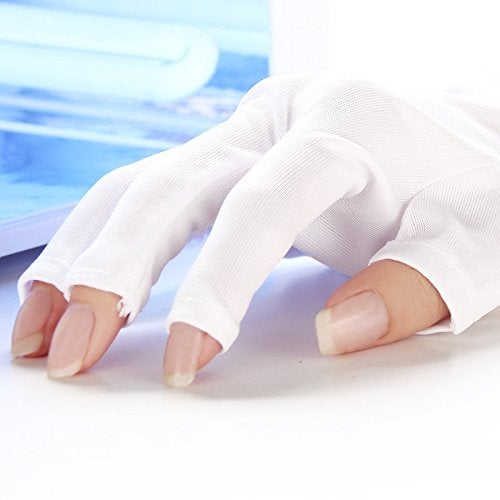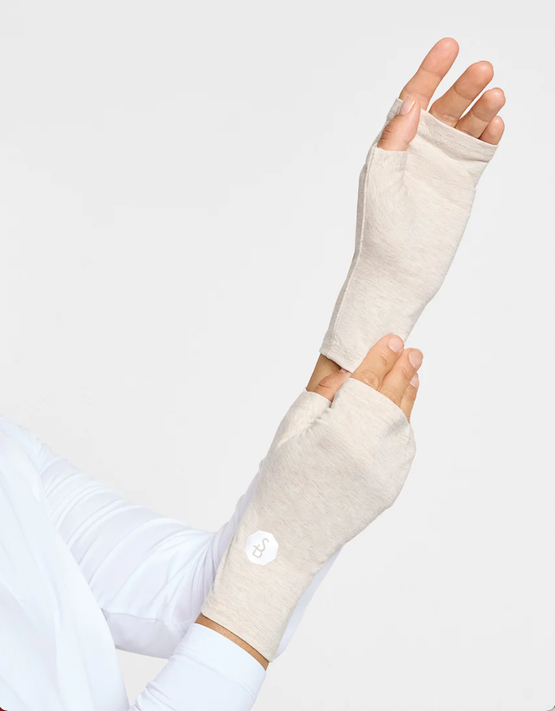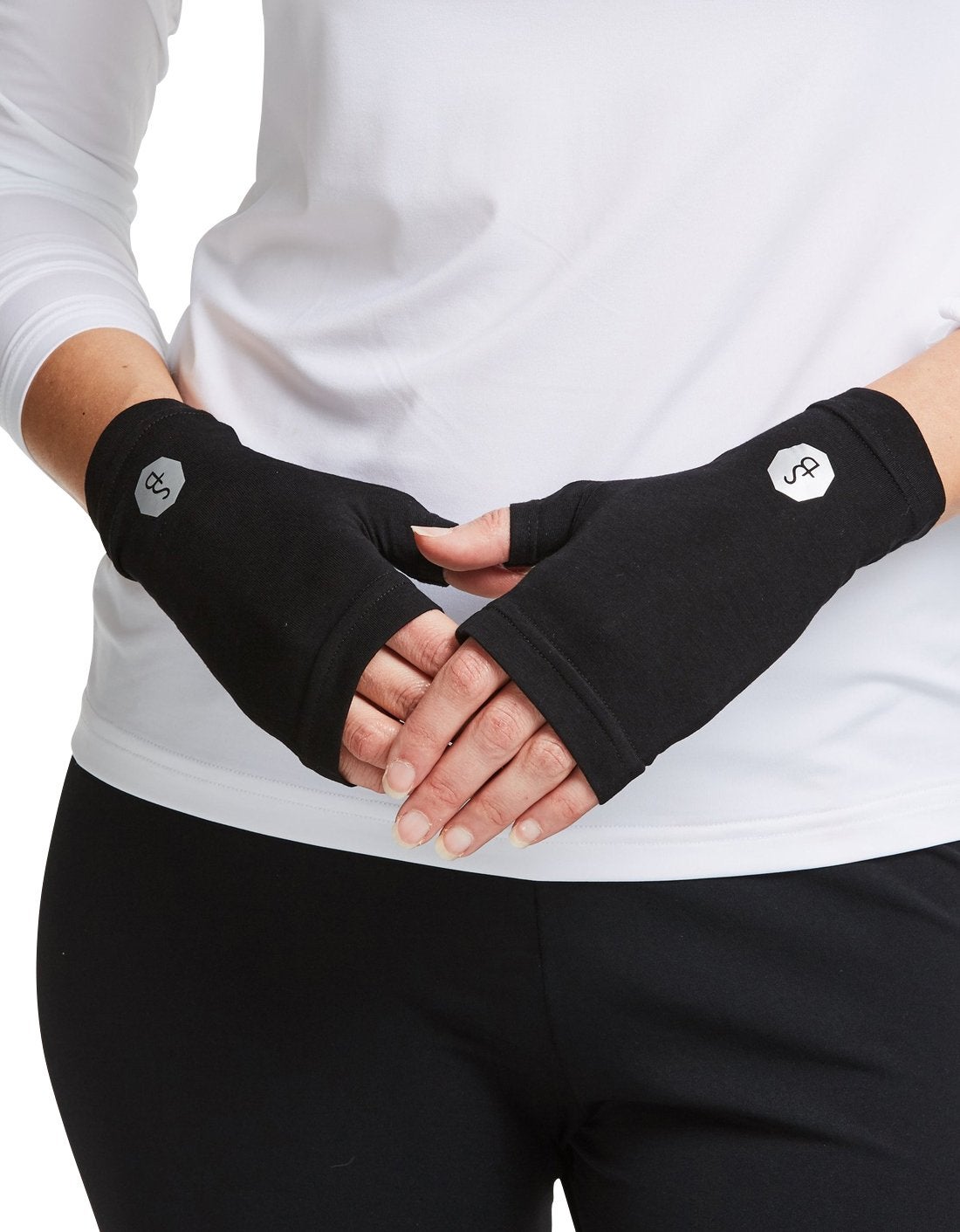In case you missed it, a study published earlier this year found that radiation from UV nail lamps can damage DNA and cause irreversible mutations (a precursor to skin cancer) in human cells. “As a dermatologist I have always known that UV exposure up close on a regular basis is not good for the skin and can lead to mutations,” says board-certified dermatologist Dr. Anna Guanche. It’s a topic Guanche is personally invested in. The Calabasas-based expert gets gel and acrylic nails (both of which require the use of a UV lamp) every two weeks. However, she wears fingerless gloves to the salon.
AdvertisementADVERTISEMENT
Over the years there’s been buzz about UV lamps being potentially harmful to skin cells, but real scientific evidence has been severely lacking. Back in 2017, the FDA officially ruled UV nail lamps as “low risk” for developing skin cancer, according to Ph.D. chemist and the creator of Dazzle Dry nail polish, Dr. Vivian Valenty. But remember: Low risk is not the same as no risk at all. Just look at this 2020 case analysis that saw two women, who regularly got gel manicures, develop melanoma on the backs of their hands. The research, however, was inconclusive and unable to confirm if their manicures had any association with cancer.
With answers murky at best, many GelX and gel manicure die-hards have been carrying on with their regularly scheduled nail appointments without being majorly alarmed. However, with this new evidence in hand, it begs the question: How worried should you be about getting radiation from gel manicures?
Here’s what you need to know.
What exactly are UV lamps?
As any gel mani-goer knows, nail lamps are a mandatory step in curing any gel-based manicure. So if that’s your service of choice, it’s impossible to avoid using them. “There is no such thing as a ‘safe’ nail light, since the UV is part of the chemical reaction,” says Dr. Valenty.
Dr. Guanche compares them to “mini tanning beds.” “UV rays from the sun, tanning beds and these nail curing devices all use UV to penetrate into the DNA and mutate it; these mutations lead to skin cancer in the future,” explains Dr. Guanche. Although it’s important to note that the wavelengths are different (340-395 nm for nail salon devices and 280-400 nm for tanning beds). There have been many studies tying UV lights in tanning beds to increased cancer risk, but this, however, is the first study that really looks at the possible harmful effects of UV nail lamps.
AdvertisementADVERTISEMENT
What new information does the research tell us?
As mentioned, the study ultimately found that cell death and DNA mutations occurred. However, it's important to note that, while telling, this study was done in vitro (in petri dishes) and not on actual humans (in vivo). “This is the only way to study a change without actually having to do biopsies and exposing humans to live radiation, exposure, etc.,” says San Diego-based plastic surgeon, Dr. Amir Karam.
In this case, they used cells derived from humans and mice (as a control to see if it has the same effect in the animal cell line). Researchers observed that after 20 minutes, 20% to 30% of the cells had died. After three consecutive 20-minute sessions, 65% to 70% of cells had died. Translation: The more frequent the use of the lamp, the higher the cell-death rate. “What this [new] study has shown is that there are changes that kill the cell, which is probably not the biggest deal (if a skin cell dies, it dies; but the more concerning issue is the [cancer-causing] mutation that it creates,” Dr. Karam says.
What does this mean for the nail industry?
Again, this study focused on 1 to 3 twenty-minute daily exposures, which (even if you are religious about your monthly gel nail appointments) is a lot longer than you’d actually be doing it at the salon. About “3000 times higher,” estimates Dr. Valenty. “While the results indicate that exposure to UVA poses an increased cancer risk, the exposure level reported is significantly higher than the permissible daily exposure.”
AdvertisementADVERTISEMENT
So while these findings are a bit extreme, it’s still concerning news. “I don’t think people will stop this service altogether, but this will definitely lead to a rise in the interest of alternative methods, as people explore other ways to achieve this look in a safer, healthier way,” says celebrity manicurist Deborah Lippmann.
How can you protect against the UV radiation?
If you do continue using UV lamps, the pros offer two possible solutions: applying SPF ahead of your treatment or fingerless gloves. “You can use SPF 30 or higher, but some manicurists feel it interferes with the gel smoothness or adherence,” says Dr. Guanche. “Also, using gloves that have some protective factor with the tips cut out would make sense to limit the amount of UVA exposure to the rest of the hand and the fingers,” adds Dr. Karam.
Lippmann suggests nixing gels altogether. “I personally prefer regular nail polish when I do manicures on my celebrity clients who need polish changes (to go with the many looks they wear) on a daily basis,” shares Lippmann. Additionally, she warns: Gel manicures have the potential for damaging your nail beds — especially in the removal process.
So what is the verdict on gel manicure risks?
There’s no doubt that the chronic use of these nail lamps is damaging to human cells. That being said: “A large amount of work is still left to validate the study’s findings and implications in real life,” says Dr. Valenty. “I think the risks are clearly there, but how much of a risk it is? It's not super clear at this point,” adds Dr. Karam.
The pros all point out that it’s imperative that tests be run on actual humans before they can make definitive conclusions about cancer risk. However, this is a time-consuming study, because cancer development doesn't happen overnight. “It oftentimes happens after 5, 10, 15 years of exposure, so the study results may be a decade or even two away from being really clearly correlated for us,” says Dr. Karam. Do with this information what you may, but, ultimately, it's a personal decision about whether or not you want to stop all together to eliminate any potential exposure and risk.
At Refinery29, we’re here to help you navigate this overwhelming world of stuff. All of our market picks are independently selected and curated by the editorial team. All product details reflect the price and availability at the time of publication. If you buy or click on something we link to on our site, Refinery29 may earn commission.









